Picks for the fence: beautiful design options
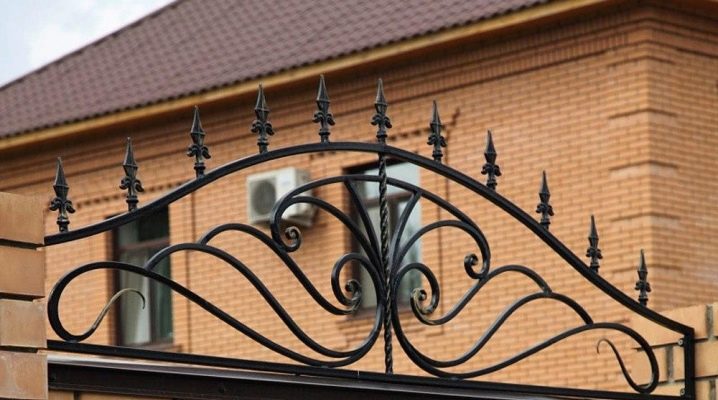
Forged fences are among the most reliable ways to protect garden plots, territories of enterprises and business facilities. They are distinguished by an attractive appearance and a very solid cost. They fence off the zones of parks, squares, private households from unwanted intrusions. These accessories serve as elements that complete the design of private estates and other territories.
The plurality of manufacturing techniques, design options makes forged and welded gates and fences a universal means for fencing off the territory of any site. Peaks are the decoration of such structures.
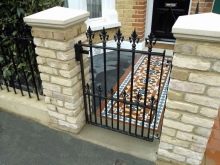
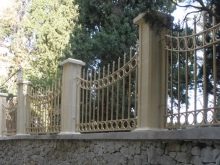
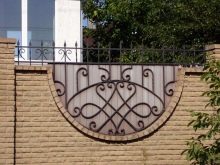
What is it?
A wrought-iron fence, ideal in beauty and decoration, installed on solid pillars, will remain unfinished if its surface is not equipped with figured peaks. This frame has a history dating back more than one century, but today the demand for it remains quite high. Pica represents pointed metal pommel, whose main purpose has always been obstacle to unwanted entry into the fenced area.
Our ancestors equipped the surfaces of gates and fences with spearheads and lances for the sole purpose of preventing the enemy from getting over the fence. If they did not care about the aesthetic purpose of the peak, nowadays such tips for the upper intake or portal cut, in addition to their functional purpose, also perform an aesthetic function.


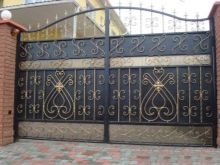
Views
The intake lance is a pointed tip made mainly of metal. A variety of such products can be called peaks from a metal profile, made by hand (when pointed tips are cut out of its sheet). These tips are installed on top of the fence. Also known are wooden peaks, turned on woodworking machines and intended for wooden fences.
Modern manufacturers offer buyers plastic fence tops, which can be considered a universal type of fence accessories.
This material is devoted specifically to forged and welded fence structures, therefore, tops for them should be considered in terms of their application to these types of fences. For them, either forged or cast iron, as well as steel lances are used.

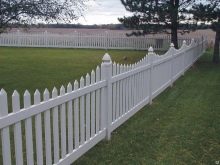
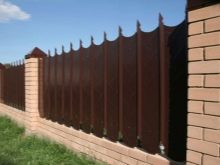
In most cases, such products have the form of several flattened metal petals, cones of a four- or three-sided section. There are also products that approach in shape to an isosceles triangle of an elongated shape. The ends of the pick-up lances can resemble arrowheads and spearheads, and all of them can be flat, three-dimensional figures. There are also exclusive types of tops made in the form of small figurines.
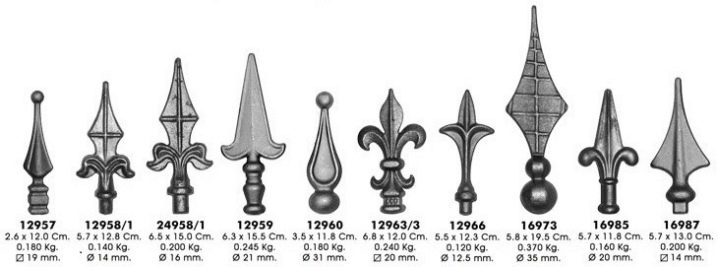
As a rule, mild steel is used as a raw material for the manufacture of cast and forged intake and gate fittings. Cast accessories can be made of cast iron. This ferrous metal serves as the raw material for smelting steel and is a traditional material for casting metal jewelry, used for centuries to make finely patterned artistic fences. It does not weld well with steel fence elements.
This problem can be solved by planting the cast-iron pommel on the thread. For this, a corresponding cavity is made in it, although the pommels are often cast along with the entire fence.The same applies to steel products, which, in addition to the threaded connection, are also easily welded to the steel fence.

If you have the desire and the appropriate technical skills, you can make the pick-up tips in the form of a peak with your own hands. In this case, you will have to use not casting or forging (this is practically impracticable at home), but welding and cutting metal. The material of manufacture will be a steel round or square bar, angle, hexagon, reinforcement and I-beam.
Such products, not being sufficiently aesthetic, quite sharp at the ends and do an excellent job with the protective function. In terms of strength, reliability and durability, they are not inferior to more elegant cast and forged counterparts.
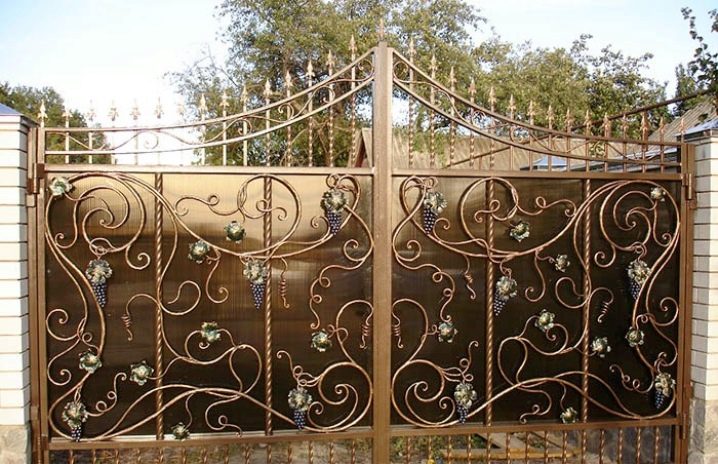
Criterias of choice
Initially, the historical function of pointed fence tops was to protect the territory from unwanted intrusions of robbers. The perimeter of the fence has always been equipped with sharp elements for this very purpose. The aesthetic appeal and artistic sophistication of the fence faded into the background. In our time, the main importance remains for the decorative purpose of such tips. To combine these two functions, you can use steel tops made by art forging.
For decorative purposes, it is better to use cast peaks, which, in contrast to forged varieties, have a more blunt top.
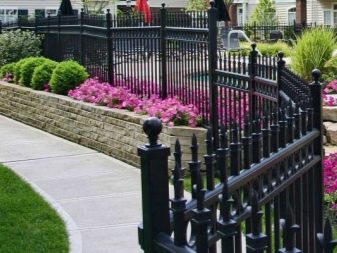
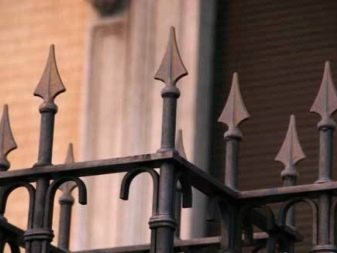
There are combined types of fences that combine pointed and decorative peaks installed through one. Another criterion for the selection of intake or collar tips is the problem of the relevance of any of their varieties in relation to a particular type of fence construction. This especially applies to the use of cast peaks on beautifully forged fences, because for a patterned forged fence, such tops can become "alien" elements.
It is important to observe the measure, trying to achieve the originality of the fence. The peaks must match the existing fence.
Installation and maintenance features
When installing peaks on the upper cut of the fence, it is important to take into account the nuance: they must reproduce the shape of the cut itself (for example, arched, wavy, flat or angular). In order to visually change the geometry of the railing pattern, they can be folded into shapes, changing by heating and bending the slope of the ends of the rod on which the peak tops are attached.
In some cases, such elements are installed not only along the upper part of the fence, but also include them in the composition of the pattern in its middle part, or equip the lower cut of the fence with them. They must be installed vertically, even if pointed downwards. At the same time, it is permissible to install the pommels through one bar of the fence, as well as on each of its bars (provided that they deviate from the pillars for a certain distance).
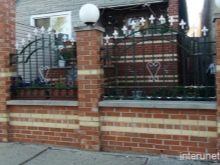
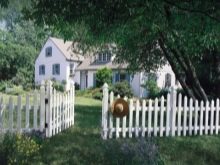
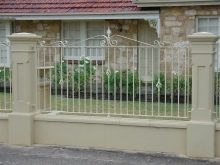
As for the technology of fastening steel tops to the fence, forged peaks are attached to the fence by electric welding. The only parameter that should be taken into account in this case is the section of such a top, which can be either round or square. Therefore, they should be attached to the fence elements of the corresponding profile.
Cast peaks differ from forged counterparts by the presence of a cavity in the form of a seat. During assembly, this cavity is pushed onto the top of the intake profile or rod. This requires adherence to the principle of fastening a round profile to a round bar, and a square one to a square one.
As for the care of forged or cast fence poles, it is enough to periodically paint these elements in order to protect them from corrosion (with the exception of cast iron products). This will update the design of the fence, giving it a fresh and beautiful appearance.
Staining can be carried out to match the fence, or highlighting the peaks with a contrasting color.

For information on how to make pick-up tips in the form of a peak with your own hands, see the next video.



































































The comment was sent successfully.